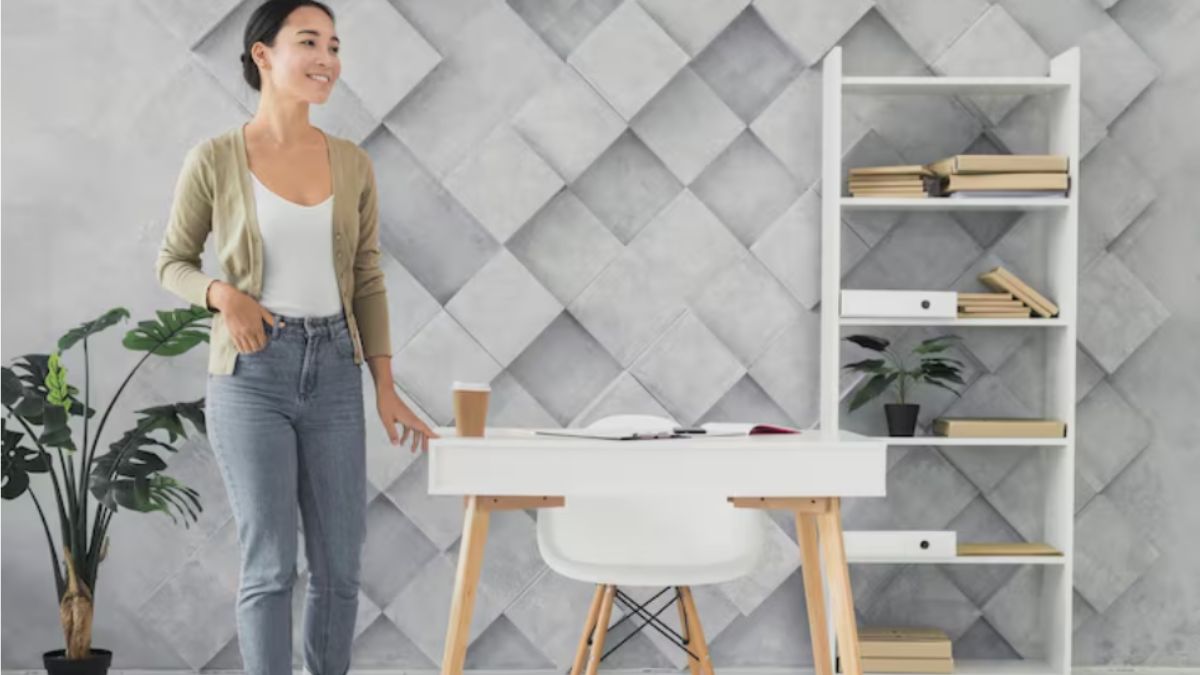Lifestyle
pyntekvister: How to Get Started with This Innovative Technique

Are you ready to dive into a world of creativity and innovation? Meet pyntekvister, the artistic technique that’s taking home decor by storm. This unique method combines traditional craftsmanship with modern aesthetics, allowing anyone to transform their living spaces into stunning showcases of personal expression. Whether you’re an experienced DIY enthusiast or just starting out on your creative journey, pyntekvister offers endless possibilities for making your home truly yours. Let’s explore how this exciting technique can elevate your interior design game!
What is pyntekvister?
Pyntekvister is an innovative crafting technique that combines various materials to create stunning decorative pieces. It blends traditional artistry with modern design, resulting in unique home decor items.
At its core, pyntekvister involves intricate weaving or knotting methods. Crafters can use fabric strips, yarns, and other textiles to bring their visions to life. This versatility allows for endless creative possibilities.
The appeal of pyntekvister lies in its accessibility. Anyone can learn the basics and start creating beautiful designs without needing extensive experience in crafting or art.
As a tactile activity, it also encourages mindfulness and focus. Engaging with your hands while letting creativity flow promotes relaxation and satisfaction as you transform simple materials into eye-catching works of art.
The History and Origins of Pyntekvister
Pyntekvister has roots that trace back to Scandinavian cultures, where artisans embraced natural materials in their crafts. The name itself is derived from old Nordic words that embody creativity and innovation.
Historically, this technique was used as a form of storytelling through decorative art. Each piece reflected the cultural heritage and personal stories of its creator.
As time progressed, pyntekvister evolved from traditional handcrafts into a modern design trend. Artists began experimenting with various textures and colors, pushing the boundaries of what could be achieved with simple materials.
This evolution parallels movements in interior design, where there’s been a growing appreciation for handcrafted items over mass-produced decor. Today, pyntekvister stands as an emblem of artistic expression deeply rooted in history yet vibrantly relevant in contemporary home aesthetics.
Benefits of Using Pyntekvister in Home Decor
Pyntekvister brings a fresh perspective to home decor. Its intricate designs can transform ordinary spaces into extraordinary ones. Each piece tells its own story, adding character and warmth.
The versatility of pyntekvister is another standout feature. Whether you’re aiming for a modern aesthetic or something more rustic, these creations fit seamlessly into various styles. You can easily customize colors and patterns to suit your personal taste.
Additionally, incorporating pyntekvister promotes sustainability in your decor choices. Many artisans use reclaimed materials, making each item eco-friendly while supporting local craftspeople.
Using this technique also serves as a wonderful conversation starter when hosting guests. People are often fascinated by the art and creativity behind such unique pieces, leading to engaging discussions about artistry and design trends in home decoration.
Essential Tools and Materials for Pyntekvister
To dive into the world of pyntekvister, having the right tools and materials is key. Start with a sturdy work surface. A clean table allows for precision and creativity.
Next, gather your cutting tools. Scissors or craft knives will help you shape your materials accurately. A ruler can ensure straight lines, while a cutting mat protects your surfaces.
Adhesives play a significant role in this technique. Consider using glue sticks or double-sided tape for quick bonding that doesn’t warp paper.
For decoration, various papers are essential—think textured cardstock or patterned scrapbook sheets. Natural elements like twigs or dried flowers can add an organic touch to your creations.
Keep some paint and brushes handy for those finishing touches that bring everything together beautifully. With these essentials at hand, you’re ready to explore the art of pyntekvister!
Step-by-Step Guide on Creating Your First Pyntekvister Piece
Creating your first pyntekvister piece can be an exciting venture. Start by gathering your materials: a sturdy canvas, vibrant yarns, and trusty scissors.
Begin with a simple design in mind. Sketch it lightly on the canvas to guide you as you work. Choose colors that resonate with your style for maximum impact.
Now, it’s time to weave! Use a needle or even your fingers to thread the yarn through the fabric according to your sketch. Don’t worry about perfection; this is all about creativity.
As you progress, layer different textures and patterns. Experimentation is key here. If one combination doesn’t work out, simply adjust it until it feels right.
Once finished, secure any loose ends neatly at the back of the canvas. Your unique pyntekvister creation is ready to dazzle anyone who steps into your space!
Creative Ideas for Incorporating Pyntekvister into Your Home
Pyntekvister can transform any space into a work of art. Start with wall hangings featuring intricate patterns that draw the eye and spark conversation.
Consider creating personalized coasters or placemats for your dining table. These functional pieces add flair while showcasing your artistic skills.
For a cozy touch, use pyntekvister designs on throw pillows. They can bring color and texture to your living room, making it inviting and stylish.
Don’t overlook outdoor spaces! Pyntekvister can enhance garden decorations or patio furniture cushions, blending creativity with nature.
Think about seasonal decor too. Craft holiday-themed pyntekvister ornaments to give your home a unique festive spirit.
Incorporating this technique opens up endless possibilities for customization and personal expression throughout your home.
Tips and Tricks for Perfecting Your Pyntekvister Technique
Practice makes perfect. Don’t be afraid to experiment with different materials and techniques as you develop your pyntekvister skills. Each attempt will teach you something new.
Start with simple designs. Mastering basic shapes allows for more intricate work later on. As your confidence grows, incorporate patterns that reflect your personal style.
Lighting is crucial during the creation process. Good lighting helps you see details clearly, preventing mistakes and enhancing overall quality.
Take breaks when needed. Stepping back can provide fresh perspectives on your work and keep frustration at bay.
Document your progress through photos or a journal. This will help track improvements over time while also inspiring future projects.
Connect with others in the community online or locally. Sharing tips and receiving feedback can elevate your technique significantly, turning a hobby into an art form.
Conclusion
Pyntekvister is more than just a technique; it’s an art form that brings creativity and warmth into your home. By understanding its origins and benefits, you can appreciate the depth of this craft. With the right tools and materials at hand, even beginners can dive in confidently.
The step-by-step guide sets a solid foundation for creating stunning pieces that reflect your personal style. Don’t hesitate to experiment with different ideas to truly make each creation unique. Remember, practice makes perfect—so keep refining your technique over time.
As you embark on your pyntekvister journey, allow yourself the freedom to explore various designs and styles. The beauty of this innovative approach lies in its versatility, offering endless possibilities for enhancing any living space. Embrace this creative outlet and watch as it transforms not only your home but also how you express yourself within it.
Lifestyle
3 Tips for Grooming Nervous or Anxious Dogs

Some dogs go into the tub like it is playtime. Others shake, hide, or freeze when they see a brush. But when it comes to grooming a nervous dog, it takes more than skill. You have to deal with patience and care. So that grooming should not feel like a battle between you and your furry friend. With some right tricks and tips, you can turn a stressful grooming experience into a great time. Here are five tips to help you groom even the most anxious dogs with ease.
1. Create a Calm and Quiet Environment
The mood of the space sets the tone for the grooming session. Loud dryers and sharp clanks can make even a calm dog feel trapped. So you must try to keep things soft and still. Play calm tunes to fade out the harsh sounds of tools like the dryer and clipper.
Moreover, before you start, let the dog sniff the tools. This will help them feel safe. During the grooming session, you must speak low and slow. Avoid fast moves or loud laughs, as your calm vibe will pass on to the dog.
2. Seek Help from Professionals
If your dog’s fear feels too strong to handle, it is better to take professional help. Some experts are trained to work with anxious pets. They know tricks to calm tense dogs and can guide you on what helps or harms.
You must look for groomers who offer slow and fear-free care, such as those from Woof Gang Bakery & Grooming. They offer the best services for dog grooming in Shaker Heights and can help your anxious furry friend in the best possible way. Their experts know how to move with patience and keep the pet at ease. They even use special tools or quiet clippers that are especially made for shy pets.
However, if your dog’s fear is deep, you must talk to a vet. They will check if there is pain, past trauma, or a health issue behind the anxiety. Sometimes what seems like fear could be pain from mats, ear issues, or skin burn. And a professional’s eye can spot what you might miss.
3. Use Positive Enforcement
Fear fades when joy takes its place. Dogs learn fast when they earn treats, hugs, or praise. Giving small treats during each step of the grooming can make a significant difference. A pat on the head always works, so you can try this positive act with your dog.
You must start slowly. Brush one spot, and then give a treat. Trim one nail and give a treat again. In this way, the dog will learn that the comb or clipper will bring snacks. Now the sound of the tools may not scare them anymore.
If your furry friend pulls away during the grooming session, never scold or shout. Remember, their fear will not fade through force, and it will grow instead. So keep your tone kind and patient. It is okay if the session takes longer. Your goal is not saving time; it is ensuring peace.
Conclusion
Grooming nervous or anxious dogs requires patience, empathy, and the right techniques. By creating a calm environment, seeking professional help when needed, and using positive reinforcement, you can transform grooming from a stressful task into a reassuring experience. These practices not only help dogs feel safe but also strengthen the bond between pet and owner. In the end, a gentle approach ensures that grooming becomes a moment of care and trust rather than fear.
Lifestyle
The Future of Urban Living: How Green Roofs Transform Cities

Rapid urbanization is transforming landscapes worldwide, often replacing green spaces with heat-trapping surfaces that strain both infrastructure and communities. Among the leading solutions for healthier, more resilient cities are green roofs—vegetated rooftops that introduce living systems into built environments. Beyond their visual appeal, these innovative structures deliver functional benefits, making for cleaner air, cooler cities, and safer stormwater management. For property owners and developers seeking practical ways to green their rooftops, eco roofing services offer tailored solutions for both new builds and retrofits.
The advantages of green roofs extend beyond their environmental impact, encompassing economic, regulatory, and even cultural aspects of city life. In urban centers where green spaces are scarce, these living rooftops serve as vital ecosystems that enhance air quality, lower energy costs, and provide natural habitats for wildlife. Thoughtful integration of green roofs can transform city skylines, turning barren rooftops into lush havens that help cities thrive in a rapidly changing world.
As awareness grows about issues such as climate change, the urban heat island effect, and biodiversity loss, green roofs are becoming centerpieces of sustainable city planning. Governments and businesses are increasingly turning to these installations for their blend of ecological and economic benefits. Whether part of a municipal mandate or a developer’s vision for innovation, green roofs are reshaping the way cities adapt and grow.
These remarkable systems also enable cities to achieve their environmental goals and promote community well-being. Insights from case studies around the world show that well-designed green roofs are essential tools in urban sustainability toolkits, paving the way for cleaner, greener, and more livable futures.
Combating the Urban Heat Island Effect
In densely built areas, conventional roofing materials such as asphalt and concrete absorb and radiate heat, significantly elevating local air temperatures compared to outlying areas—a phenomenon known as the urban heat island effect. Green roofs remedy this by covering heat-absorbing surfaces with vegetation. Through processes like evaporation and shading, green roofs can reduce ambient temperatures by as much as 20°F and lower roof surface temperatures by up to 56°F, according to the U.S. Environmental Protection Agency. This cooling not only creates more comfortable living conditions but also directly reduces the need for air conditioning, cutting energy costs and emissions.
Enhancing Stormwater Management
Urban areas struggle with rapid stormwater runoff due to the prevalence of impermeable surfaces. This leads to overwhelmed sewers, increased flooding, and polluted waterways. Green roofs address this issue by holding and slowly releasing rainwater, thereby reducing runoff volumes and easing the burden on drainage systems. For example, Loyola University Chicago’s green infrastructure diverts an estimated 19 million gallons of water from city sewers annually, making a significant contribution to the city’s stormwater management efforts.
Improving Air Quality
Vegetated rooftops act as natural air filters, capturing airborne particulates, absorbing carbon dioxide, and helping to regulate urban climate. By integrating layers of plants and specialized growing media, green roofs remove toxins from the atmosphere, benefiting both human residents and ecosystems. This filtration function is especially valuable in congested cities, where air pollution from vehicles and industry often reaches hazardous levels. Research from National Geographic highlights that green roofs can measurably reduce concentrations of airborne pollutants and improve urban air quality.
Supporting Urban Biodiversity
Green roofs serve as microhabitats that help preserve and restore biodiversity. By mimicking natural environments, they provide safe havens for pollinators, birds, and beneficial insects that are otherwise displaced by urban development. Cities like London have documented diverse wildlife thriving in rooftop ecosystems; for instance, the Canary Wharf green roofs host endangered black redstart birds and more than 200 insect species. These installations form stepping stones across built-up areas, reconnecting fragmented ecosystems and supporting the broader health of city environments.
Boosting Energy Efficiency
Green roof layers provide strong thermal insulation, protecting buildings from the extremes of hot and cold. Their vegetation cover and soil buffer limit summer heat gain through shading and evaporation while reducing winter heat loss. This dual benefit substantially decreases the need for artificial heating and cooling—one of the highest energy drains in high-rise buildings. Over time, property owners realize both direct utility savings and reduced greenhouse gas emissions through wise green roof choices.
Extending Building Lifespan
The structure of a green roof not only supports plant growth but also shields the underlying building membrane from damaging ultraviolet radiation and drastic temperature swings. This protection slows deterioration, minimizes maintenance needs, and extends the life of roofing materials. While traditional roofs often require replacement every 15 to 20 years, high-quality green roofs can last four to five decades, making them a wise investment for both economic and environmental reasons.
Policy Initiatives and Global Adoption
Recognizing the broad benefits of green roofs, municipalities are implementing forward-thinking policies to encourage or even mandate their use. Toronto was the first North American city to require green roofs on new commercial developments in 2009, resulting in rapid and widespread adoption. Chicago and other cities have followed with incentives and building codes designed to reward the integration of eco-friendly rooftops. Globally, cities are adapting these approaches to their own unique challenges and environments, making green roofs a foundational component of sustainable urban design strategies.
Conclusion
Green roofs are revolutionizing how urban environments respond to the demands of a changing climate and growing populations. They transform rooftops from wasted spaces into productive, living landscapes that deliver measurable ecological, economic, and social gains. With more cities prioritizing the installation of green roofs, urban communities worldwide can look forward to cleaner air, cooler neighborhoods, improved resilience against climate extremes, and vibrant biodiversity—ensuring that tomorrow’s cities are truly built to thrive.
Lifestyle
Add Character to Your Living Room with Designer Cabinets

Your living room is the space in the house where you entertain guests. It is often the most well-designed room in the house because you want to impress your guests and loved ones. You want to convey your preferences and sense of style through the living room décor. Every item and curios used in that room portrays your personality. Your choice of furniture pieces, center table, TV units, and designer cabinets says a lot about you. Hence, you need to be very careful about what you choose. Only the very best matters.
- Designer cabinets: A peek into your personality
A great way to enhance the overall look and feel of the living room is by installing designer cabinets. And when it comes to these cabinets, a tailored solution is always the best solution. Why purchase run-of-the-mill products when you can achieve a distinct and different style through the designer ones? Look for experts in this field. Contact service providers who are well-known and offer quality solutions at interesting rates. StoneHill Cabinetry is one such service provider.
- Displays books, curios, and other items in the designer cabinets
You have an interesting book collection and want to display it, but you are not interested in a regular bookcase. Opt for designer cabinets. You will be able to flaunt your wide range of different books without having to settle for the standard bookshelf. Take a look at the cabinets with glass doors. Display your books in this cabinet. Dirt and dust will not be able to accumulate on them, and yet the onlookers will be able to marvel at your extensive collection.
- Designer cabinets are great for storing your belongings
Most of us have an extensive collection of items that we don’t want to discard. But due to the lack of space, you don’t know where to keep them. Why worry when you have designer cabinets? You can store all your belongings in these cabinets and secure them with a lock. But keep one thing in mind. These cabinets should be incorporated into the living room in a way that makes them an integral part of the décor. How about a cabinet below the side table? None of your guests will open this cabinet, and yet you have a great space to store your items.
- Display your collection of photo frames in these cabinets
If you are one of those who still have old photo frames, then these cabinets are the ideal place to display them. Opt for open cabinets. Place the photo frames in the different racks. Arrange the frames in a haphazard manner or in a line to achieve a distinct look. Ensure that you choose offbeat photo frames to capture the viewer’s attention. And since these cabinets are installed on the wall, kids will not be able to touch the photo frames. They will remain safe and secure at all times.
Summing it up
Every house tells a story, and your living room is the main character. Ensure that the room meets expectations. Contact one of the leading cabinet makers in the city and inform them about your requirements and specifications so that they can provide the best solution tailored to your needs. Ask them to provide you with multiple designs before they proceed with creating the final design.
-

 Entertainment6 months ago
Entertainment6 months agoSflix: How It’s Changing the Way We Watch Movies and TV Shows
-

 Blog4 months ago
Blog4 months agohanime1: The Ultimate Destination for Anime Lovers
-

 Technology7 months ago
Technology7 months agoSimpcitt: The Rise of a Unique Online Community
-

 Entertainment5 months ago
Entertainment5 months agoCrackstreams 2.0: The Future of Free Sports Streaming?
-

 Bills7 months ago
Bills7 months agoWhy Does My Instagram Reel Stop Getting Views After One Hour? How to Fix It?
-

 80s7 months ago
80s7 months agoFavorite 100 Songs of the 80s: (#1) Michael Jackson – Billie Jean
-

 Technology7 months ago
Technology7 months agoAnon Vault: Protecting Your Digital Footprint
-

 Blog7 months ago
Blog7 months agoSimpcitu: The New Age Trend Shaping Online Interactions
